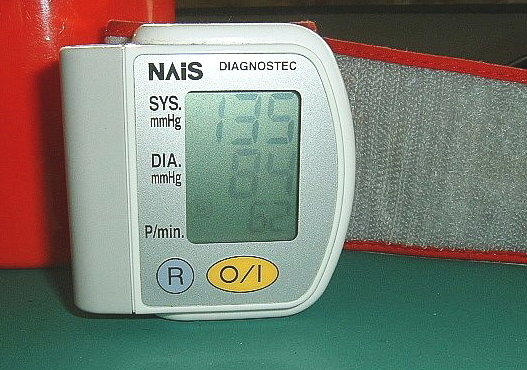18.5A: Introduction to Blood Pressure
- Page ID
- 7856
Blood pressure is a vital sign reflecting the pressure exerted on blood vessels when blood is forced out of the heart during contraction.
- Explain the topic of blood pressure
Key Points
- Diastole is the relaxation of the chambers of the heart and systole is the contraction of the heart chambers.
- Blood pressure is composed of systolic and diastolic blood pressure, which correspond to the pressure following contraction of the heart and pressure during relaxation for the heart, respectively. Normal blood pressure should be around 120/80, with the systolic number on top.
- Mean blood pressure decreases as the circulating blood moves away from the heart through arteries, capillaries, and veins due to viscous loss of energy. Mean blood pressure drops during circulation, although most of this decrease occurs along the small arteries and arterioles.
Key Terms
- blood pressure: The pressure exerted by the blood against the walls of the arteries and veins; it varies during the heartbeat cycle and according to a person’s age, health, and physical condition.
- systolic pressure: The peak arterial pressure during heart contraction.
- diastolic pressure: The minimum arterial pressure between contractions, when the heart expands and refills.
Blood pressure is the pressure that blood exerts on the wall of the blood vessels. This pressure originates in the contraction of the heart, which forces blood out of the heart and into the blood vessels.
Two mechanisms take place in the heart: diastole and systole. Diastole is the relaxation of the chambers of the heart and systole is the contraction of the heart chambers. Systolic pressure is thus the pressure that your heart emits when blood is forced out of the heart and diastolic pressure is the pressure exerted when the heart is relaxed. This is the main mechanism by which blood pressure operates.
Blood pressure is one of the principal vital signs. During each heartbeat, blood pressure varies between a maximum (systolic) and a minimum (diastolic) pressure. A normal blood pressure should be around 120/80, with the systolic pressure expressed first.

Measurement of vital signs using a sphygmomanometer: Blood pressure and pulse, or the vital signs, are measured as indicators of several aspects of cardiovascular health.
Differences in mean blood pressure are responsible for blood flow from one location to another in circulation. The rate of mean blood flow depends on the resistance to flow presented by the blood vessels. Mean blood pressure decreases as circulating blood moves away from the heart through arteries, capillaries, and veins due to viscous loss of energy. Mean blood pressure decreases during circulation, although most of this decrease occurs along the small arteries and arterioles. Gravity affects blood pressure via hydrostatic forces (for example, during standing) Valves in veins, breathing, and pumping from contraction of skeletal muscles also influence venous blood pressure.

